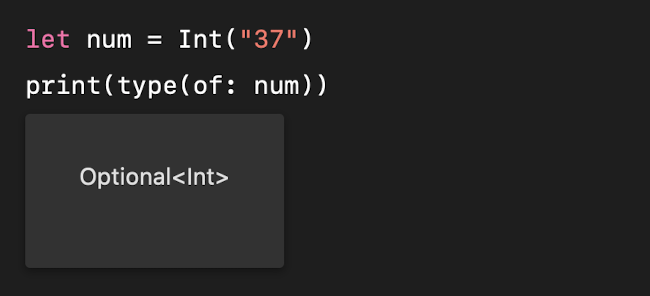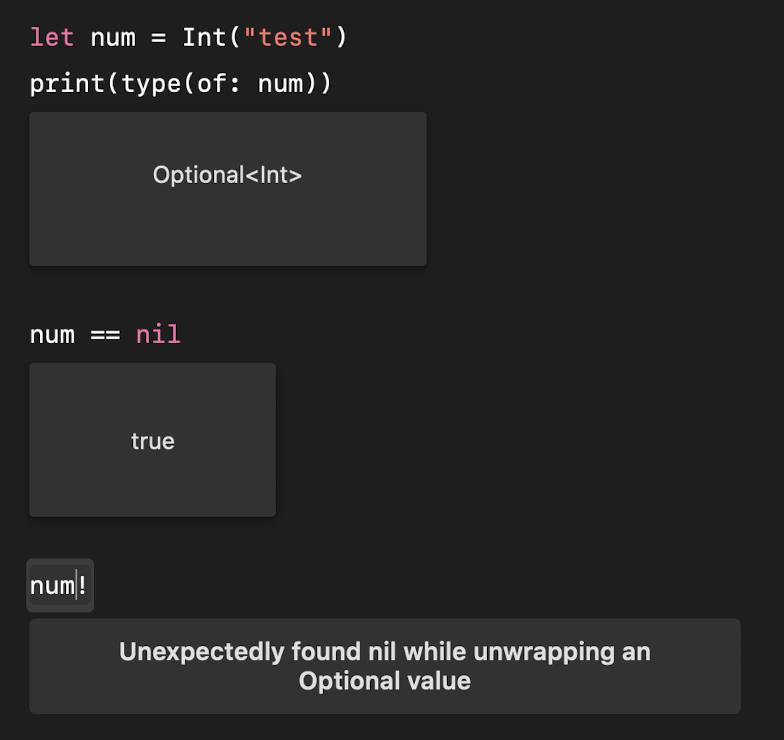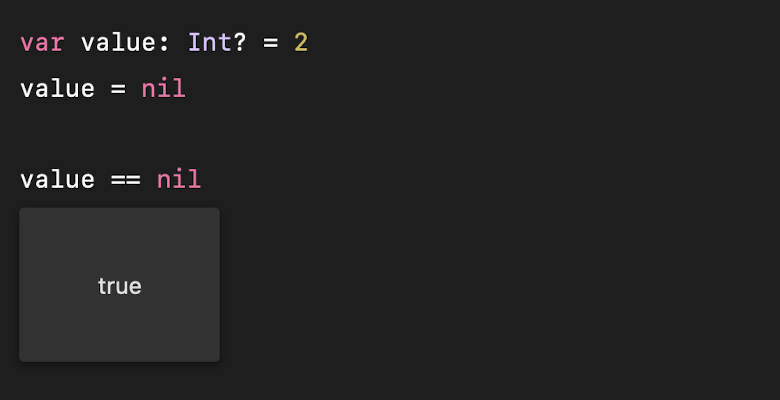Swift Optionals and `nil`
This tutorial belongs to the Swift series
Optionals are one key feature of Swift.
When you don’t know if a value will be present or absent, you declare the type as an optional.
The optional wraps another value, with its own type. Or maybe not.
We declare an optional adding a question mark after its type, like this:
var value: Int? = 10Now value is not an Int value. It’s an optional wrapping an Int value.
To find out if the optional wraps a value, you must unwrap it.
We do so using an exclamation mark:
var value: Int? = 10
print(value!) //10Swift methods often return an optional. For example the Int type initializer accepts a string, and returns an Int optional:

This is because it does not know if the string can be converted to a number.
If the optional does not contain a value, it evaluates as nil, and you cannot unwrap it:

nil is a special value that cannot be assigned to a variable. Only to an optional:


You typically use if statements to unwrap values in your code, like this:
var value: Int? = 2
if let age = value {
print(age)
}download all my books for free
- javascript handbook
- typescript handbook
- css handbook
- node.js handbook
- astro handbook
- html handbook
- next.js pages router handbook
- alpine.js handbook
- htmx handbook
- react handbook
- sql handbook
- git cheat sheet
- laravel handbook
- express handbook
- swift handbook
- go handbook
- php handbook
- python handbook
- cli handbook
- c handbook
subscribe to my newsletter to get them
Terms: by subscribing to the newsletter you agree the following terms and conditions and privacy policy. The aim of the newsletter is to keep you up to date about new tutorials, new book releases or courses organized by Flavio. If you wish to unsubscribe from the newsletter, you can click the unsubscribe link that's present at the bottom of each email, anytime. I will not communicate/spread/publish or otherwise give away your address. Your email address is the only personal information collected, and it's only collected for the primary purpose of keeping you informed through the newsletter. It's stored in a secure server based in the EU. You can contact Flavio by emailing flavio@flaviocopes.com. These terms and conditions are governed by the laws in force in Italy and you unconditionally submit to the jurisdiction of the courts of Italy.